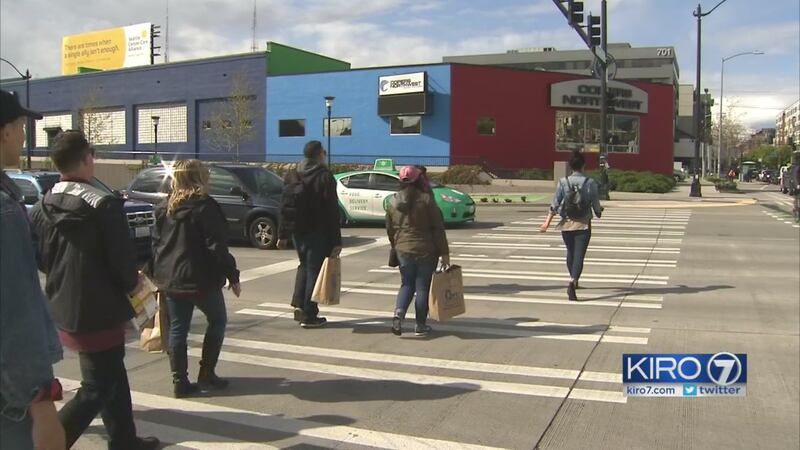SEATTLE — At 68-years-young Carolyn Mawbey is still out and about almost every day.
“I would prefer to walk,” Mawbey said proudly.
“It’s better for me, and I don’t have to deal with the car traffic, so I get home in a better mood.”
However, in the past few weeks crossing the street has been stressing her out.
“I started to ask friends: ‘Have you noticed me slowing down lately?’” Mawbey said.
“Because I would get about maybe 15 paces from the corner, the light was saying cross and I wouldn’t be able to get across the street. I thought: ‘This is odd, I used do this all the time, what’s wrong with me?’”
Turns out it had nothing to do with her.
A new system designed to alleviate traffic along the notorious Mercer Mess by changing traffic signals in real time based on road conditions-- is to blame.
Last week, the Seattle Department of Transportation celebrated the technology as successful in reducing traffic delays.
But a side effect of the real time traffic system is shorter times for pedestrians get to cross Mercer and the streets that connect to it.
KIRO 7 found most lights along Mercer between 15 to 25 seconds to cross, as opposed to closer to a minute before the change.
KIRO 7 observed this change creating many instances of jaywalking.
Pedestrians pointed out that often times the traffic lights stay green for cars during the time when people are given the stop walking sign.
People KIRO 7 spoke with suggested that creates a potential opportunity to extend pedestrian crossing times.
“If I’m coming by with two bags of groceries, or pushing a baby, or walking with a cane or walker… it would be awfully tight to get across the street now,”
Mawbey said.
A spokesman for SDOT released a statement in response to the crosswalk concerns:
“We have heard from the public about people not pushing the pedestrian push buttons. Without pushing the push buttons the system has no input as to whether there is demand at that crosswalk in order to provide the time to cross. So in order to activate the cross, one must push the button (this is different from the previous operation in some locations).
The issue of crossing being too short is related to how the system takes data and makes decisions in real-time.
We provide the standard federal guideline for pedestrian clearance speed at all locations where there is a pedestrian crossing.
What people are seeing in the field is that the crossing times are shorter because the system has to maintain flexibility with reacting to the real-time demand for pedestrian, vehicles and transit on the side street.
As we continue to refine the operation of the system we will look for ways to provide additional crossing time while attempting to maintain efficiency for all modes.”
Cox Media Group








